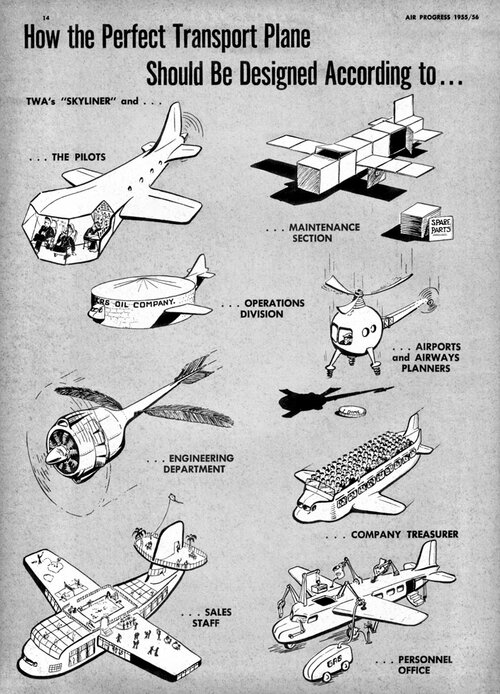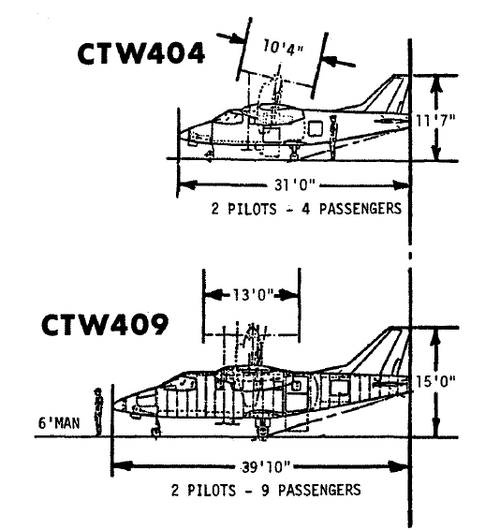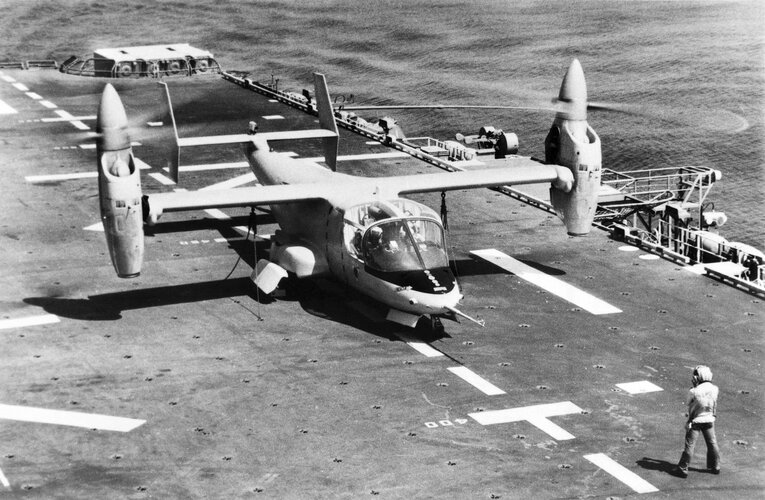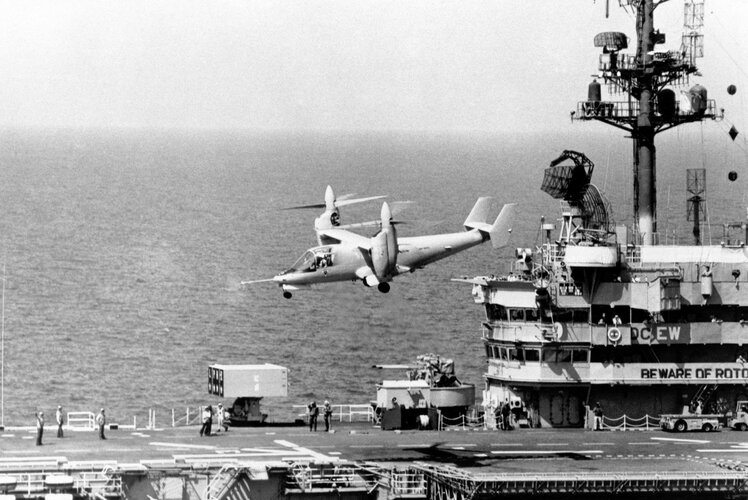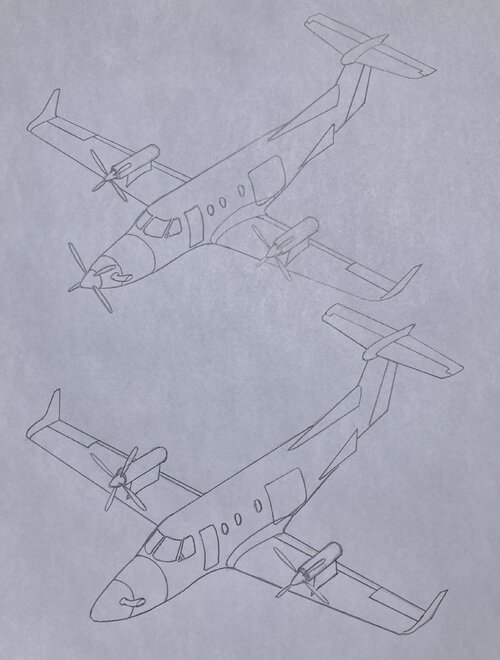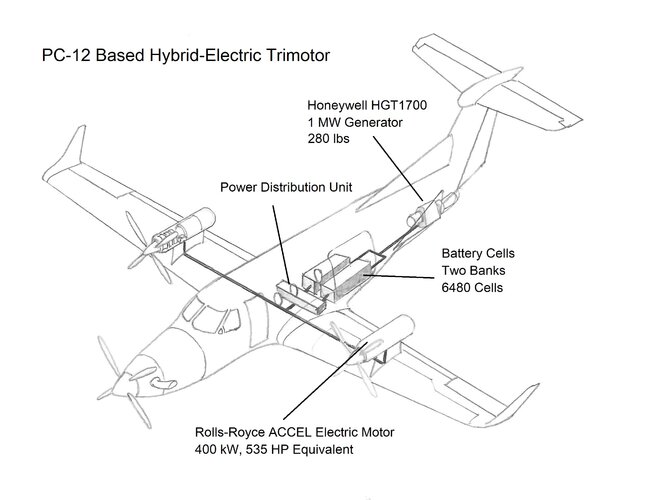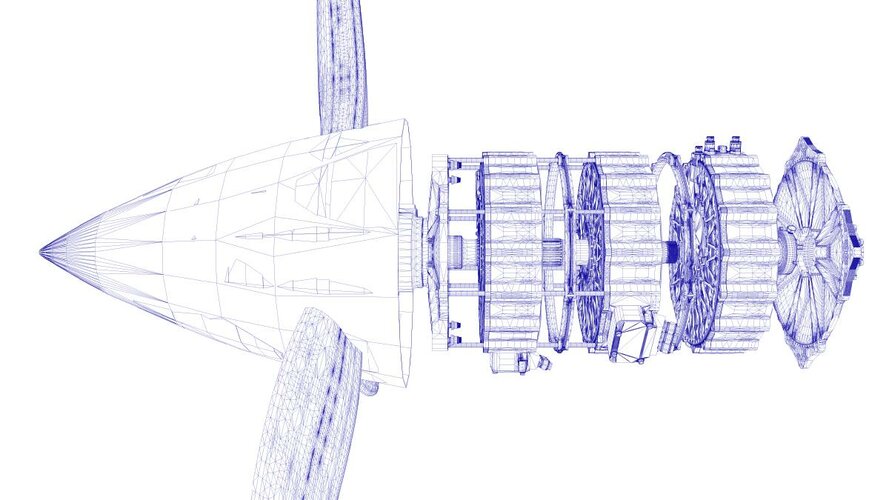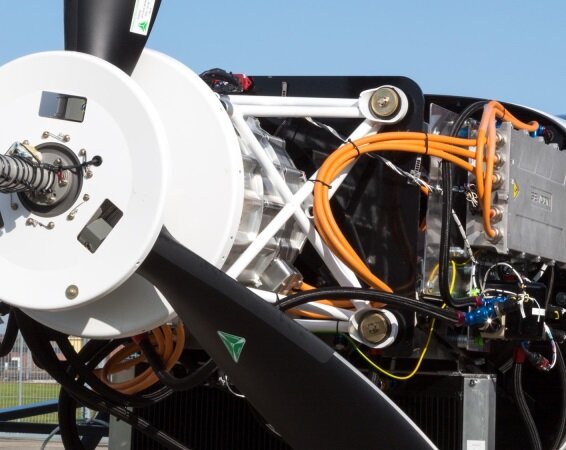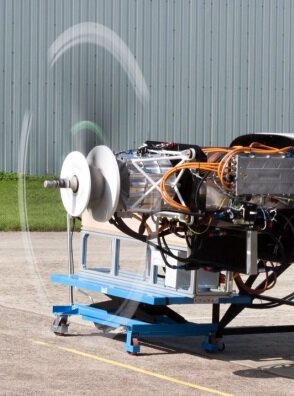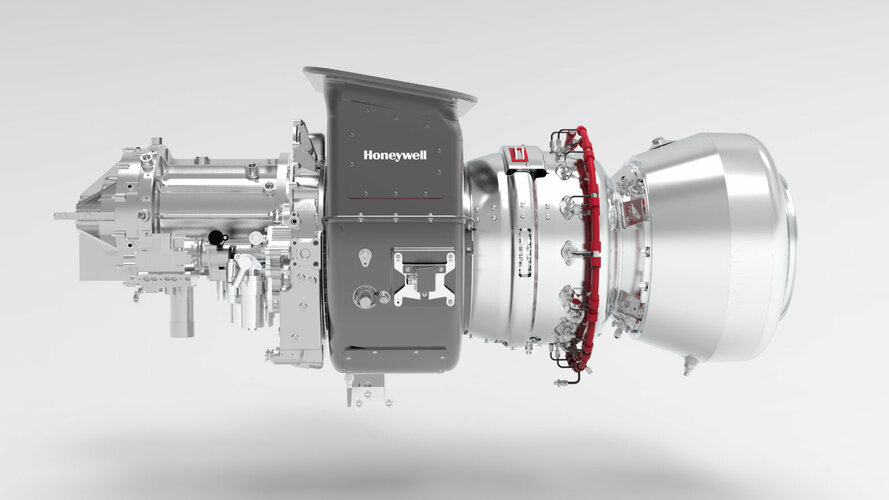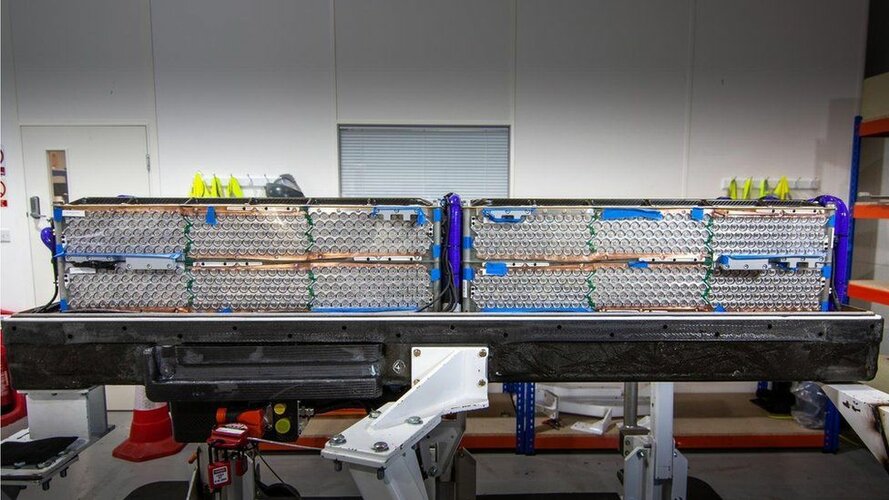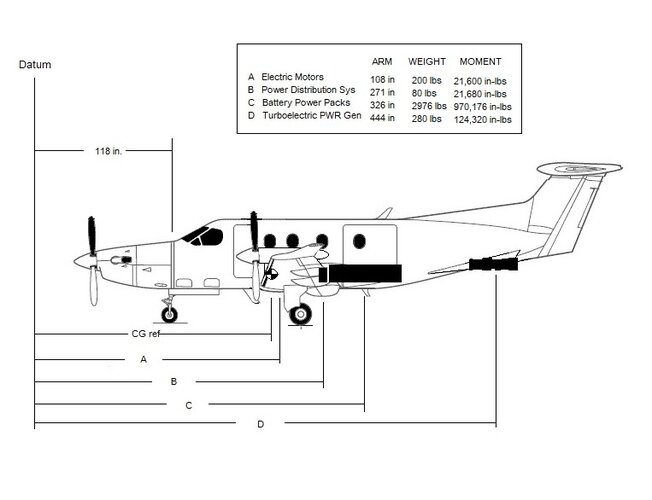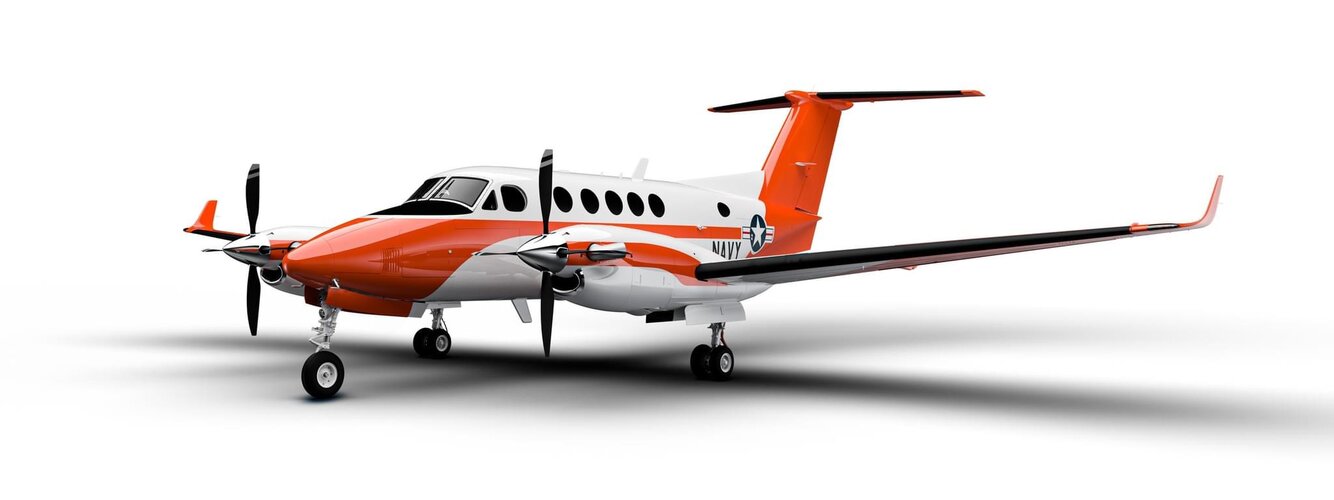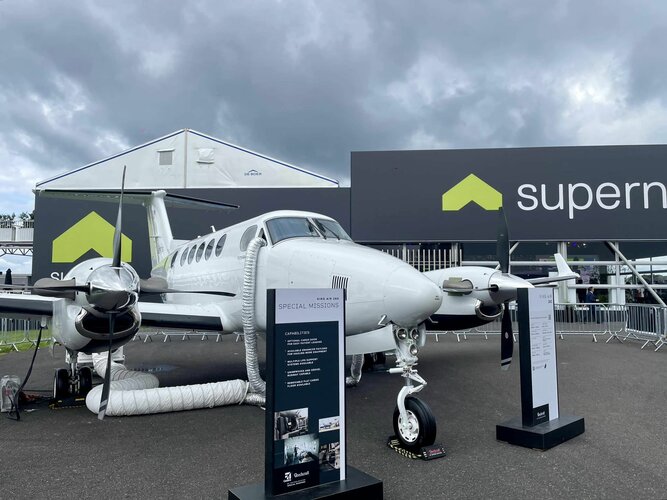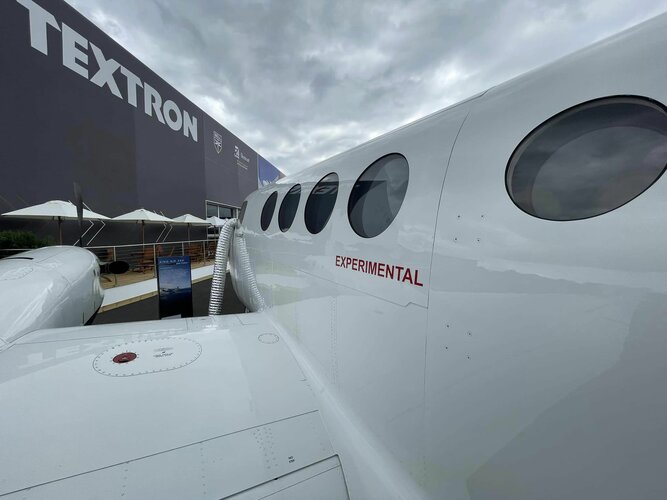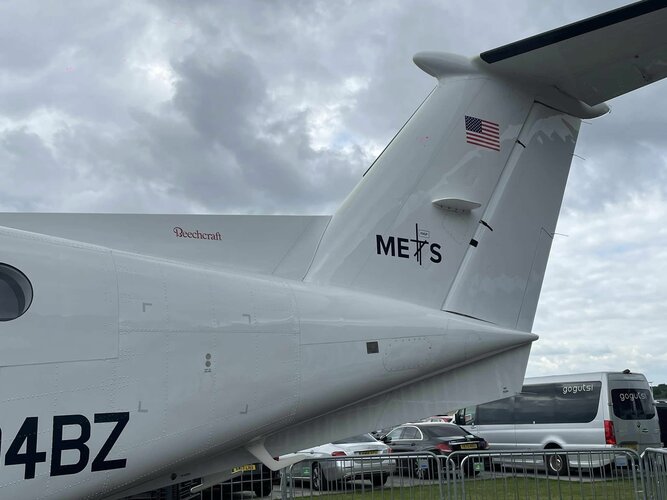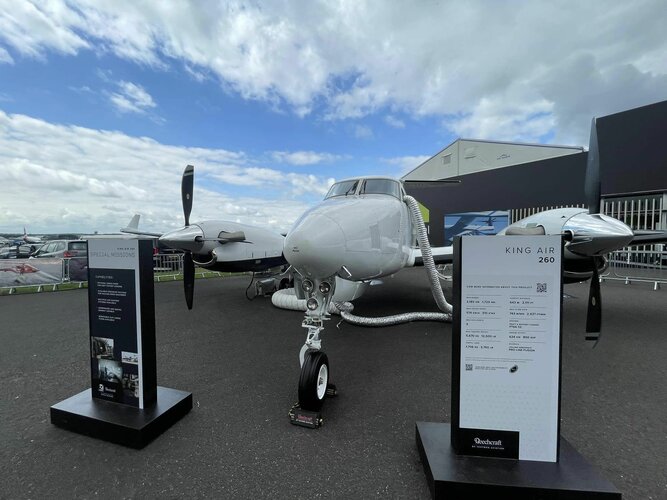You are using an out of date browser. It may not display this or other websites correctly.
You should upgrade or use an alternative browser.
You should upgrade or use an alternative browser.
US Navy Multi-engine Multi-Crewed Carrier Capable Training Aircraft - T-44 Replacement
- Thread starter Dynoman
- Start date
- Joined
- 29 July 2009
- Messages
- 1,768
- Reaction score
- 2,473
Aim9xray, that illustration brings to mind the debacle that was TFX. The Navy and Air Force were tasked with developing one airframe that would support naval fighter operations to replace the Navy's F-4 Phantom while the Air Force concentrated on requirements for strike/interdiction to replace the F-105. Ultimately, the Navy's F-111B program was cancelled as its overweight and underpowered airframe would not fulfill the Navy's mission. Similar issues with the DoD and NASA on the Space Shuttle program for winged vs lifting body designs.
The twin multiengine naval trainer concept presented here was really a 'what if' the Navy added a carrier landing and launch capability to the replacement program of the T-44 Pegasus. Nothing off-the-shelf would be suitable. In my opinion the new Valor would be the closest concept for tilt-wing training, but it still wouldn't help the fixed wing turboprop community flying carrier capable E-2s and C-2s. A tilt wing aircraft that could transition to horizontal landing and takeoff would be ideal, such as the Chana CTW 409.
The twin multiengine naval trainer concept presented here was really a 'what if' the Navy added a carrier landing and launch capability to the replacement program of the T-44 Pegasus. Nothing off-the-shelf would be suitable. In my opinion the new Valor would be the closest concept for tilt-wing training, but it still wouldn't help the fixed wing turboprop community flying carrier capable E-2s and C-2s. A tilt wing aircraft that could transition to horizontal landing and takeoff would be ideal, such as the Chana CTW 409.
Attachments
Last edited:
- Joined
- 29 July 2009
- Messages
- 1,768
- Reaction score
- 2,473
XV-15 Navy trials on USS Tripoli. Would have been neat to have seen a trainer tiltwing variant emerge from the XV-15. Of course opportunities existed with the AW609 since the early 80's.
Attachments
Last edited:
- Joined
- 16 April 2008
- Messages
- 9,605
- Reaction score
- 14,494
Of course opportunities existed with the AW609 since the early 80's.
? BA609 didn't even kick off until the late 1990s.
Stingray 320
ACCESS: Restricted
- Joined
- 8 July 2022
- Messages
- 1
- Reaction score
- 0
There is NO requirement for the ME trainer to land in the boat, as the vast majority of advanced students are for P8/C130/E6 and V22 (who get their boat quals at the FRS. The E2/C2 student throughput is small in comparison and they get carrier qualed in the T-45 anyways. We should be looking at a new KA 200 or what the Brit’s did with the Phenom 300’s (or something similar like the Citation Mustang) to get ME training accomplished.
- Joined
- 29 July 2009
- Messages
- 1,768
- Reaction score
- 2,473
You are correct. There are no real requirements for a carrier capable T-44 replacement. The KA is the most economical design that meets the Navy's req.'s today. The training at FRS is specific to the airframe in which aviators will fly. The common denominator is a ME aircraft that provides asymmetrical thrust for training and with pressurization to climb to cruise altitude for long leg flights.There is NO requirement for the ME trainer to land in the boat, as the vast majority of advanced students are for P8/C130/E6 and V22 (who get their boat quals at the FRS.
Although there is not a requirement for a carrier capable multi-engine training aircraft this thread is used to address the design requirements and concept of such an aircraft.
There are other designs (namely existing corporate aircraft) that could potentially meet the performance requirements, but again for small turboprops, they all lack cabin pressurization, and for the turbine designs, they are all more expensive to operate.
The design effort could be to simply design a pressurized hull within an existing turboprop airframe. But that would be too boring. A design similar to the Embraer CBA 123 Vector, which is a unique design that marries pressurized cabin with fuselage pylon mounted engines, however the engine spacing would reduce the effect of asymmetrical thrust.
The fun in the design effort would be looking at how such a design (similar to a T-44) could operate around the boat. To expand on the concept other ideas for such a design could be for an economical ship launched maritime surveillance aircraft or as a ship to shore liaison aircraft, or even a communications relay with loiter capability, similar to an RC-12. Again, all for fun and no specified requirement.
Last edited:
It appeared to me reading the above analysis that we are probably looking at the problem the wrong way: searching for an existing off the shelf Turboprop a/c.
What about rebuilding an existing design to Navy requirements at a minimal expenses?
I am basing that essay on the Pilatus PC12.
Despite being a single engine design, it's an efficient short field cruiser with a pressurized cabin (rare!). It then suits well many parameters of the mission but, obviously, the twin engines aspect of the training.
Let's add a twin set of podded EV engines, one per wing. Let's connect them to the turbine that will run as a generator through a minimal battery. The battery will be sized to sustain all the carrier approach part of the mission only (probably 30 to 60 min of flight time) to minimize weight addition.
Then let's add a set of folding Propellers to each of the E-engines and a manually installed socket to reduce the drag when wing's engines are not required.
During the carrier approach training, all 3 engines are running. The nose turbine is ran at full throttle to generate electricity but its thrust is managed through the Propeller pitch. This creates a variable drag to simulate various interesting scenario for the trainee and increases safetyness with the possibility to quickly add power on the fuselage axis for a turnaround.
Wing podded engines are run like in any twin engine a/c.
Using a PC12 will ease certification of a de-rated turbine (if my memory stands right it has been already done by Pilatus). Pilatus are also already in the forces, greatly reducing the logistical footprint of the new design.
I realize a sketch would be welcome. But I guess you get the idea.
What about rebuilding an existing design to Navy requirements at a minimal expenses?
I am basing that essay on the Pilatus PC12.
Despite being a single engine design, it's an efficient short field cruiser with a pressurized cabin (rare!). It then suits well many parameters of the mission but, obviously, the twin engines aspect of the training.
Let's add a twin set of podded EV engines, one per wing. Let's connect them to the turbine that will run as a generator through a minimal battery. The battery will be sized to sustain all the carrier approach part of the mission only (probably 30 to 60 min of flight time) to minimize weight addition.
Then let's add a set of folding Propellers to each of the E-engines and a manually installed socket to reduce the drag when wing's engines are not required.
During the carrier approach training, all 3 engines are running. The nose turbine is ran at full throttle to generate electricity but its thrust is managed through the Propeller pitch. This creates a variable drag to simulate various interesting scenario for the trainee and increases safetyness with the possibility to quickly add power on the fuselage axis for a turnaround.
Wing podded engines are run like in any twin engine a/c.
Using a PC12 will ease certification of a de-rated turbine (if my memory stands right it has been already done by Pilatus). Pilatus are also already in the forces, greatly reducing the logistical footprint of the new design.
I realize a sketch would be welcome. But I guess you get the idea.
Last edited:
- Joined
- 29 July 2009
- Messages
- 1,768
- Reaction score
- 2,473
Here's a quick concept sketch. I made a second drawing indicating a gas generator for electric power in place of the PC-12's PT-6 engine. However, the initial version would likely have to retain the engine due to the lack of EV efficiencies required for aircraft endurance.
Attachments
@Dynoman : This is exactly what I had in mind. Congrats for the graceful and prompt execution!
With the nose mounted engine, wing pods do not have to provide full power like in any twin engines. Here the focus is training and their size, notably that of their Propellers is only dimensioned to achieve mission goals (replicating the twin engine experience, even by applying differencial pitch on each wing engines in order to only simulate the adverse yaw effects). Hence it is possible to lower the drag and minimize wing flows interaction with a more streamlined setting closer to the wing surface with a reduced diameter Propeller disc area to compensate for the lost ground clearance.
With the nose mounted engine, wing pods do not have to provide full power like in any twin engines. Here the focus is training and their size, notably that of their Propellers is only dimensioned to achieve mission goals (replicating the twin engine experience, even by applying differencial pitch on each wing engines in order to only simulate the adverse yaw effects). Hence it is possible to lower the drag and minimize wing flows interaction with a more streamlined setting closer to the wing surface with a reduced diameter Propeller disc area to compensate for the lost ground clearance.
Last edited:
- Joined
- 29 July 2009
- Messages
- 1,768
- Reaction score
- 2,473
Here's a systems sketch of the concept, including the three YASA motor configuration used in the Spirit of Innovation aircraft:
Attachments
Last edited:
- Joined
- 29 July 2009
- Messages
- 1,768
- Reaction score
- 2,473
- Joined
- 29 July 2009
- Messages
- 1,768
- Reaction score
- 2,473
In the previous design I placed the battery packs in the fuselage, however, the engine nacelles may be able to contain the cells in a narrow aerodynamic fairing. Pod mounting the cells would help in reducing the fire hazard and cooling requirements in the cabin and reduce the power distribution wiring. However, the mass distribution to the wings would reduce the roll rate and require the wing roots to be strengthened.
Don't worry, the PC12 is not yet certified for Carrier arrested landing. It would need a new beefed up spar anyway.
IMOHO, the duplication of electrical power generation is ill-advised since it will add complexity and certification headaches.
Adding a simple battery that can be charged during the cruise portion of the flight is more easy. The Batteries pack can be placed inside the baggage compartment and not interacts with the passengers cabin while already meeting regulations and weight distribution.
It's all about minimizing the total cost and weight increase for Pilatus. Otherwise, if the acquisition cost doubles and structural integration requires double the certification, the Navy will do otherwise.
IMOHO, the duplication of electrical power generation is ill-advised since it will add complexity and certification headaches.
Adding a simple battery that can be charged during the cruise portion of the flight is more easy. The Batteries pack can be placed inside the baggage compartment and not interacts with the passengers cabin while already meeting regulations and weight distribution.
It's all about minimizing the total cost and weight increase for Pilatus. Otherwise, if the acquisition cost doubles and structural integration requires double the certification, the Navy will do otherwise.
Last edited:
RavenOne
ACCESS: Top Secret
- Joined
- 18 June 2008
- Messages
- 1,003
- Reaction score
- 2,676
So it be known as the T-54 now...
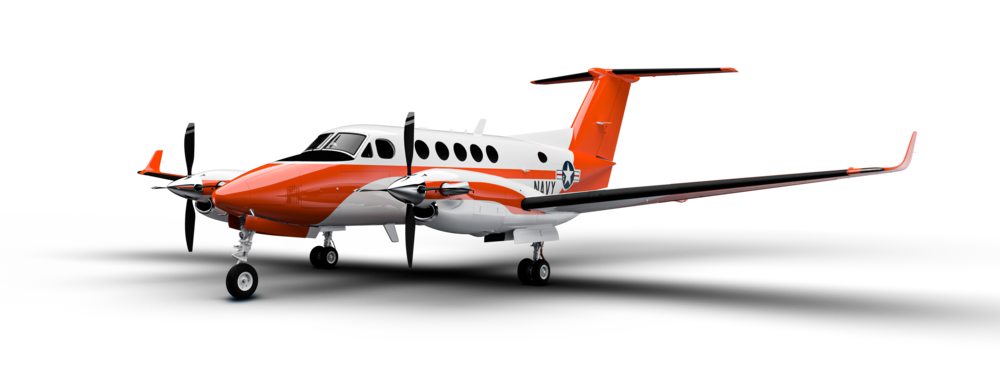
 media.txtav.com
media.txtav.com

Textron Aviation Special Missions Beechcraft King Air 260 chosen as new U.S. Navy Multi-Engine Training System (METS)
Textron Aviation today announced it has been awarded the Multi-Engine Training System (METS) contract by Naval Air Systems Command (NAVAIR) through a full and open competition.
Attachments
Last edited:
- Joined
- 29 July 2009
- Messages
- 1,768
- Reaction score
- 2,473
Since Textron owns both Beechcraft and Cessna, there would not have been any competition for the King Air from Cessna. Even with their new Sky Courier or from any of the other Cessna products. I'm curious to see who were the other proposals from and with what aircraft. I can only imagine that most were light turbojet twins, such as the Phenom 100. Something similar to an Embraer CBA-123 would have been interesting.
Last edited:
- Joined
- 3 June 2006
- Messages
- 3,094
- Reaction score
- 3,961
See also the thread 'US Navy picks Textron: Beechcraft King Air 260 Multi Engine Trainer System' https://www.secretprojects.co.uk/th...ng-air-260-multi-engine-trainer-system.40921/So it be known as the T-54 now...

Textron Aviation Special Missions Beechcraft King Air 260 chosen as new U.S. Navy Multi-Engine Training System (METS)
Textron Aviation today announced it has been awarded the Multi-Engine Training System (METS) contract by Naval Air Systems Command (NAVAIR) through a full and open competition.media.txtav.com
- Joined
- 29 July 2009
- Messages
- 1,768
- Reaction score
- 2,473
Thank you! It's a shame no other competitors in the field. With competition comes innovation.See also the thread
RavenOne
ACCESS: Top Secret
- Joined
- 18 June 2008
- Messages
- 1,003
- Reaction score
- 2,676
See also the thread 'US Navy picks Textron: Beechcraft King Air 260 Multi Engine Trainer System' https://www.secretprojects.co.uk/th...ng-air-260-multi-engine-trainer-system.40921/So it be known as the T-54 now...

Textron Aviation Special Missions Beechcraft King Air 260 chosen as new U.S. Navy Multi-Engine Training System (METS)
Textron Aviation today announced it has been awarded the Multi-Engine Training System (METS) contract by Naval Air Systems Command (NAVAIR) through a full and open competition.media.txtav.com
that was the thread I started lol
cheers
Scott Kenny
ACCESS: USAP
- Joined
- 15 May 2023
- Messages
- 11,628
- Reaction score
- 14,307
It's really hard to argue against a King Air as a twin engine trainer...
RavenOne
ACCESS: Top Secret
- Joined
- 18 June 2008
- Messages
- 1,003
- Reaction score
- 2,676
First two T-54 have been delivered
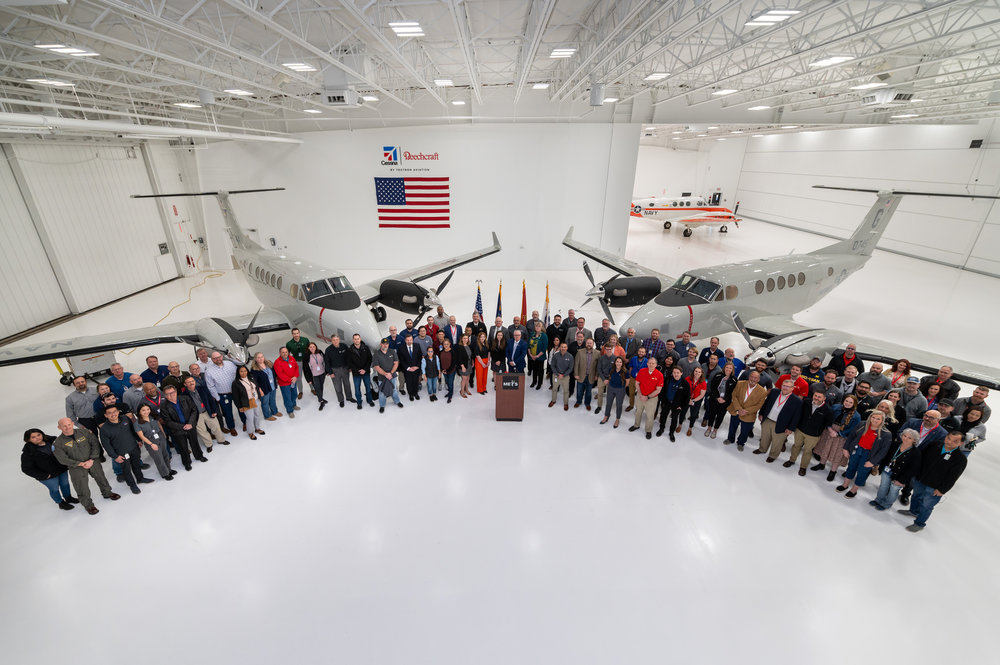
 media.txtav.com
media.txtav.com





Cheers

Textron Aviation Special Missions begins deliveries of U.S. Navy Beechcraft King Air 260 Multi-Engine Training System (METS) Aircraft
Textron Aviation today announced it delivered the first two of up to 64 Multi-Engine Training System (METS) Beechcraft King Air 260 aircraft contracted by Naval Air Systems Command (NAVAIR) on January 25, 2023, following a full and open competition.
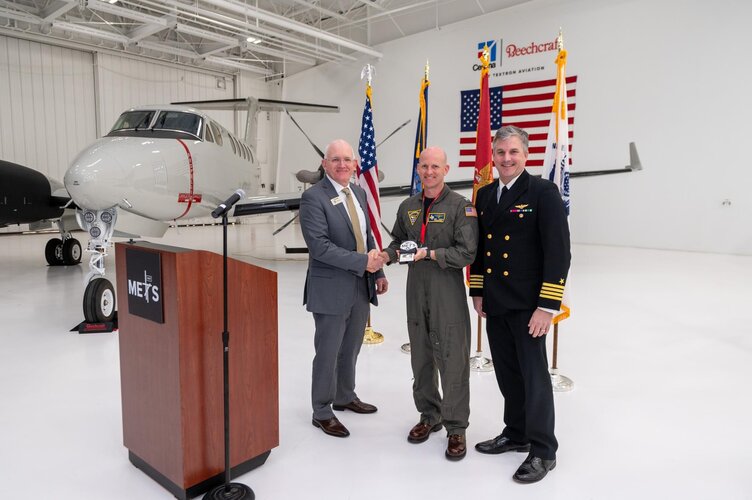
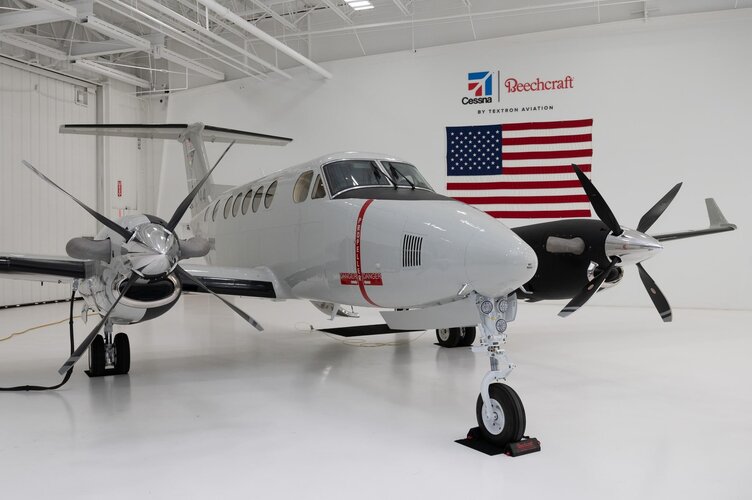
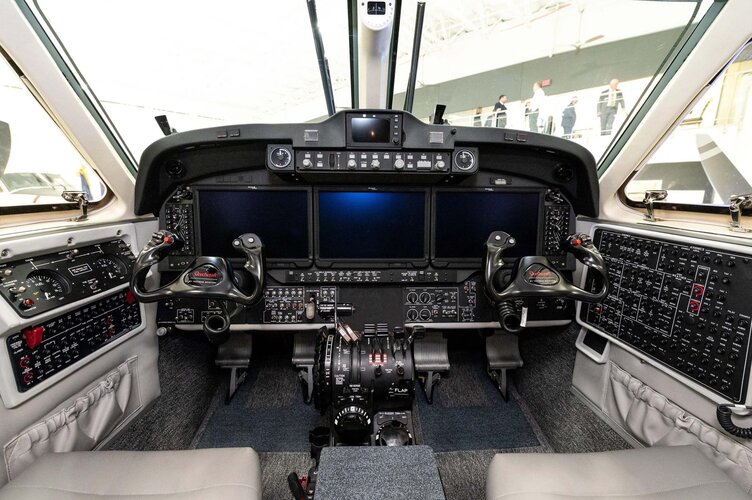
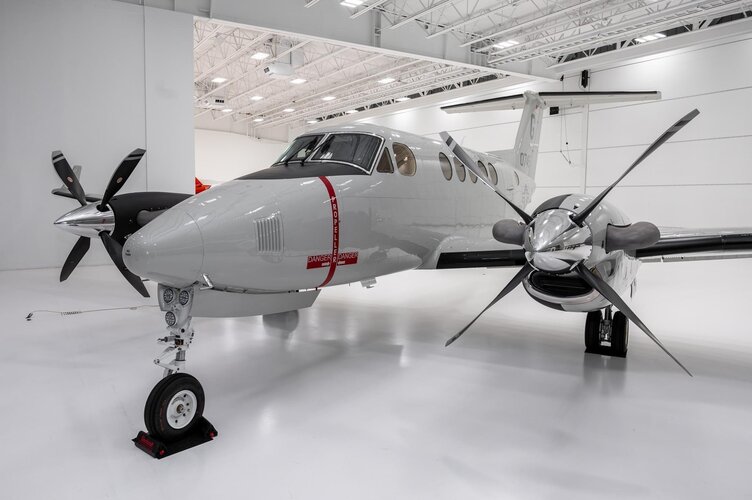
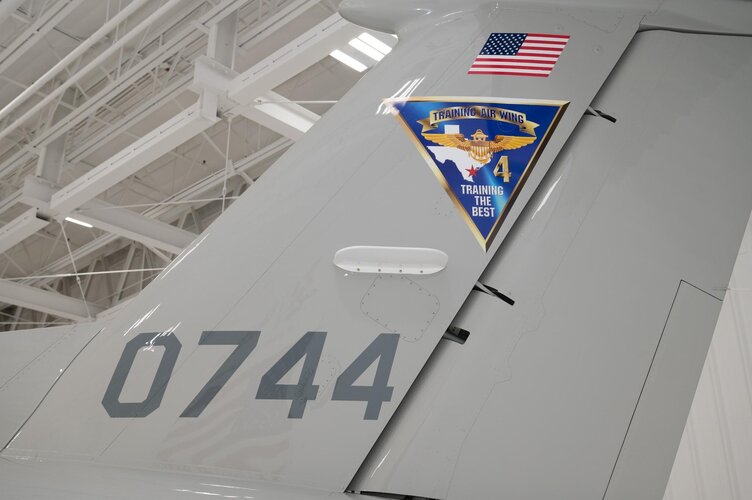
Cheers
- Joined
- 19 July 2016
- Messages
- 4,275
- Reaction score
- 3,459
Do the mullti engine trainers have the ability to land on a carrier? Touch and go? None of the above?
- Joined
- 4 July 2010
- Messages
- 2,514
- Reaction score
- 3,091
No, the multi engine trainers are for training pilots going into P-8s, transports, etc.Do the mullti engine trainers have the ability to land on a carrier? Touch and go? None of the above?
- Joined
- 19 July 2016
- Messages
- 4,275
- Reaction score
- 3,459
Ta muchly.No, the multi engine trainers are for training pilots going into P-8s, transports, etc.
Similar threads
-
-
Design exercise: next generation carrier onboard delivery airplane for US Navy
- Started by riggerrob
- Replies: 92
-
Training the Right Stuff by Mark Frankel & Tommy Thomason
- Started by overscan (PaulMM)
- Replies: 12
-
Consolidated Vultee Carrier Based Bomber for Navy OS-106
- Started by Tailspin Turtle
- Replies: 4
-

